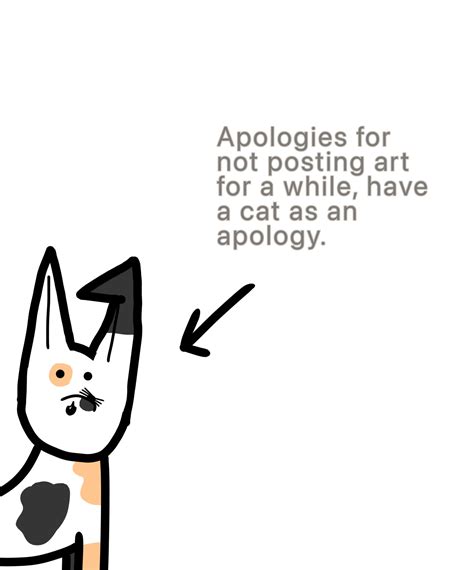
A video of a large dog seemingly apologizing to a cat after stepping on its tail has gone viral, capturing the hearts of viewers worldwide with its display of canine remorse. The incident, which was caught on camera by the pets’ owner, shows the dog nudging, pawing, and nuzzling the cat in an apparent attempt to make amends.
The heartwarming interaction, posted on social media, has garnered millions of views and sparked a flurry of comments praising the dog’s empathetic behavior. The video begins with the large dog, identified as a Leonberger named Leo, standing over the cat, named Cleo, who is lying on the floor. According to the owner, Leo had accidentally stepped on Cleo’s tail, prompting the subsequent display of contrition.
“He felt really bad and just wanted to apologize,” the owner stated in the video caption, highlighting the dog’s perceived guilt and desire to reconcile. The footage shows Leo gently using his nose to nudge Cleo, followed by placing his paw on her back in a comforting gesture. He then proceeds to nuzzle her head and neck, seemingly offering a sincere apology.
Cleo, initially appearing somewhat disgruntled, gradually softens under Leo’s persistent affection. While she doesn’t reciprocate the gestures with the same enthusiasm, she eventually allows Leo to continue his attempts at reconciliation, suggesting a level of acceptance and forgiveness.
The viral video has resonated with pet lovers across the globe, many of whom have shared similar stories of their own pets displaying empathy and remorse. Animal behavior experts suggest that while dogs may not experience guilt in the same way humans do, they are capable of recognizing when they have upset their owners or other animals in their social group. This recognition can lead to appeasement behaviors aimed at restoring harmony and avoiding conflict.
Dr. Sarah Williams, a certified animal behaviorist, commented on the video’s popularity, stating, “While we can’t definitively say the dog is ‘apologizing’ in the human sense, the behaviors displayed – such as gentle nudging, pawing, and nuzzling – are commonly observed as appeasement gestures in dogs. These actions are often used to diffuse tension and signal a desire for reconciliation after a perceived wrongdoing.”
The video also highlights the complex social dynamics that can exist between different species within a household. Despite their differences, dogs and cats can often form strong bonds and develop intricate communication patterns. In this case, Leo’s actions suggest a clear understanding of Cleo’s emotional state and a willingness to take steps to repair their relationship.
The owner, who wishes to remain anonymous, has expressed surprise at the video’s widespread attention. “I just thought it was a cute moment and wanted to share it with my friends,” they said. “I never expected it to go viral like this. It’s heartwarming to see how many people have been touched by Leo’s actions.”
The viral sensation serves as a reminder of the emotional intelligence of animals and their capacity for empathy. It also underscores the importance of observing and understanding the subtle cues that animals use to communicate their feelings and intentions. By paying attention to these cues, pet owners can foster stronger bonds with their animals and create a more harmonious household environment.
The video’s popularity also reflects a broader cultural fascination with animal behavior and the desire to understand the inner lives of our pets. As research into animal cognition continues to advance, we are gaining a deeper appreciation for the complexity and richness of the animal world. This understanding can lead to more compassionate and ethical treatment of animals, both in our homes and in the wider world.
The “Big Dog’s Paw-some Apology” video is more than just a heartwarming moment; it is a testament to the power of empathy, the complexities of interspecies relationships, and the enduring bond between humans and animals. It is a reminder that even in the midst of our busy lives, there is always time to appreciate the simple acts of kindness and compassion that can make the world a better place.
In-Depth Analysis
The viral video of Leo and Cleo offers a fascinating glimpse into the social dynamics between dogs and cats and raises important questions about animal empathy and communication. While it is impossible to definitively know what Leo was thinking or feeling, his actions strongly suggest a desire to make amends for his accidental transgression.
Several factors contribute to this interpretation. First, Leo’s body language is indicative of appeasement behavior. His posture is submissive, his movements are gentle, and his gaze is averted – all signals that he is not trying to assert dominance or aggression. Instead, he appears to be trying to minimize any further discomfort or distress to Cleo.
Second, the specific actions Leo takes – nudging, pawing, and nuzzling – are all commonly observed as affiliative behaviors in dogs. These behaviors are used to strengthen social bonds and promote positive interactions. By engaging in these actions, Leo is essentially communicating to Cleo that he wants to maintain their relationship and avoid conflict.
Third, the context of the situation is important. The owner reports that Leo stepped on Cleo’s tail, which would likely have caused her some pain or discomfort. Leo may have recognized Cleo’s distress signals – such as hissing, growling, or simply pulling away – and responded accordingly. This suggests that he is capable of understanding Cleo’s emotional state, at least to some extent.
However, it is important to avoid anthropomorphizing Leo’s behavior. While it is tempting to attribute human-like emotions and motivations to animals, it is crucial to remember that their cognitive processes are different from ours. Dogs may not experience guilt in the same way that humans do, but they are certainly capable of recognizing when they have upset another individual and taking steps to repair the relationship.
The video also highlights the importance of understanding animal communication. Dogs and cats use a variety of signals – including body language, vocalizations, and scent – to communicate with each other and with humans. By learning to recognize these signals, we can gain a better understanding of their needs and emotions and foster stronger bonds with our pets.
In the case of Leo and Cleo, their relationship appears to be based on mutual respect and affection. Despite their differences, they have learned to communicate with each other and navigate the challenges of living together in the same household. Their story is a testament to the power of interspecies relationships and the potential for animals to form deep and meaningful bonds.
Background Information on Animal Empathy
The question of whether animals experience empathy has been a subject of debate among scientists and philosophers for centuries. Empathy is typically defined as the ability to understand and share the feelings of another individual. It involves both cognitive and emotional components: the ability to recognize another’s emotional state and the ability to experience a similar emotion oneself.
While it is difficult to definitively prove that animals experience empathy in the same way that humans do, there is growing evidence that many species are capable of recognizing and responding to the emotions of others. Studies have shown that animals such as chimpanzees, elephants, and dolphins exhibit behaviors that suggest they are aware of the distress of others and are motivated to help them.
For example, chimpanzees have been observed comforting distressed individuals, sharing food with those in need, and even intervening in conflicts to protect weaker individuals. Elephants have been known to console grieving family members, help injured individuals stand, and even bury the dead. Dolphins have been observed rescuing drowning individuals and protecting vulnerable members of their pod.
These behaviors suggest that animals are capable of experiencing some form of empathy, although the extent and nature of that empathy may vary depending on the species and the individual. Some researchers argue that animals may experience a more basic form of empathy, known as emotional contagion, in which they simply mimic the emotions of others without necessarily understanding why they are feeling that way. Others argue that animals are capable of more sophisticated forms of empathy, in which they are able to understand the perspective of another individual and experience a similar emotion as a result.
The study of animal empathy is still a relatively new field, and there is much that we still don’t understand. However, the growing body of evidence suggests that empathy is not unique to humans and that many animals are capable of experiencing and responding to the emotions of others.
The Role of Social Media in Viral Sensations
The “Big Dog’s Paw-some Apology” video is a prime example of how social media can transform an ordinary moment into a global sensation. The video’s rapid spread and widespread popularity are a testament to the power of social media to connect people across geographical boundaries and cultural divides.
Social media platforms like Facebook, Twitter, Instagram, and TikTok have become increasingly important channels for sharing news, information, and entertainment. These platforms allow individuals to easily create and share content with a large audience, often reaching millions of people in a matter of hours.
The viral nature of social media is driven by several factors. First, social media platforms are designed to encourage sharing and engagement. Users are incentivized to share content that they find interesting, entertaining, or emotionally resonant. This creates a ripple effect, as each share exposes the content to a new audience.
Second, social media algorithms play a significant role in determining which content goes viral. These algorithms are designed to prioritize content that is likely to be engaging and relevant to users. Content that receives a high level of engagement – such as likes, comments, and shares – is more likely to be promoted by the algorithm, leading to even greater visibility.
Third, the emotional content of a video plays a vital role. Content that evokes strong emotions, such as joy, sadness, or surprise, is more likely to be shared on social media. The “Big Dog’s Paw-some Apology” video is a perfect example of this phenomenon. The video’s heartwarming depiction of canine remorse resonated with viewers on an emotional level, prompting them to share it with their friends and followers.
In addition to its entertainment value, social media can also be a powerful tool for raising awareness about important issues. Viral videos and campaigns can help to draw attention to social injustices, environmental concerns, and other pressing issues. Social media can also be used to mobilize support for charitable causes and to facilitate social movements.
However, it is important to be aware of the potential downsides of social media. Viral videos and campaigns can sometimes spread misinformation or promote harmful stereotypes. It is also important to be critical of the content that we consume on social media and to verify the accuracy of information before sharing it with others.
Ethical Considerations in Sharing Animal Content
While the “Big Dog’s Paw-some Apology” video has brought joy to millions of viewers, it also raises important ethical considerations about sharing animal content on social media. Pet owners should consider the potential impact of their posts on their animals’ well-being and privacy before sharing them online.
One important consideration is the potential for exploitation. Animals cannot consent to being filmed or photographed, and they may not understand the implications of having their images shared with a large audience. Pet owners should be mindful of their animals’ comfort levels and avoid posting content that could be embarrassing, humiliating, or stressful for them.
Another consideration is the potential for misinterpretation. As discussed earlier, it is important to avoid anthropomorphizing animal behavior. When sharing animal content on social media, pet owners should be careful not to attribute human-like emotions or motivations to their animals without proper context or explanation. This can lead to misunderstandings and misrepresentations of animal behavior.
In addition, pet owners should be aware of the potential for cyberbullying or harassment. Just like humans, animals can be targeted by online trolls and bullies. Pet owners should take steps to protect their animals’ online reputation and avoid sharing content that could make them vulnerable to abuse.
Finally, pet owners should be mindful of the potential for commercial exploitation. Viral animal videos can sometimes be used for commercial purposes without the consent of the owner or the animal. Pet owners should be careful about granting permission for their animals’ images to be used in advertising or other commercial ventures.
By taking these ethical considerations into account, pet owners can help to ensure that their animals are treated with respect and dignity in the online world.
Frequently Asked Questions (FAQ)
Q1: Is the dog really apologizing, or are we just projecting human emotions onto the animal?
A1: Dr. Sarah Williams, a certified animal behaviorist, states that while we can’t definitively say the dog is “apologizing” in the human sense, the behaviors displayed – such as gentle nudging, pawing, and nuzzling – are commonly observed as appeasement gestures in dogs. These actions are often used to diffuse tension and signal a desire for reconciliation after a perceived wrongdoing. It’s a complex question of interpretation, but the dog’s actions suggest an attempt to make amends.
Q2: What breed of dog is Leo, and what is his relationship with Cleo the cat typically like?
A2: Leo is identified as a Leonberger. The video suggests that Leo and Cleo have a generally positive relationship, as evidenced by Leo’s attempts to reconcile after the accidental tail-stepping. The owner’s decision to share the video also implies that this type of interaction, while perhaps unusually demonstrative, is not entirely out of character for the pair. While the owner didn’t explicitly mention the entire history of their relationship, it is assumed to be healthy, given the gentle and caring interaction.
Q3: How did the owner capture this moment on video, and did they prompt the dog’s behavior in any way?
A3: The article doesn’t specify exactly how the owner captured the video, but it implies that it was a spontaneous moment. There is no indication that the owner prompted Leo’s behavior; the caption states that “He felt really bad and just wanted to apologize,” suggesting that the actions were initiated by the dog. The owner’s role appears to have been solely to document the interaction.
Q4: What are the potential benefits and drawbacks of this video going viral?
A4: Benefits include raising awareness about animal empathy and the complex social dynamics between species. It also promotes positive human-animal interactions and can inspire kindness and compassion. Drawbacks include the potential for anthropomorphism, misinterpretation of animal behavior, and the ethical concerns of sharing animal content without considering the animal’s well-being and privacy. There is also the risk of the video being used for commercial purposes without consent.
Q5: What does this video tell us about the capacity for empathy in animals, particularly dogs?
A5: The video contributes to the ongoing discussion about animal empathy. While it’s impossible to definitively prove that dogs experience empathy in the same way humans do, the behaviors displayed by Leo suggest a capacity for recognizing and responding to the emotional state of another animal. Appeasement gestures like nudging, pawing, and nuzzling indicate a desire to repair a social bond and alleviate distress. This aligns with growing scientific evidence that many animal species are capable of recognizing and responding to the emotions of others, though the extent and nature of that empathy may vary.
The Enduring Appeal of Animal Stories
The “Big Dog’s Paw-some Apology” video taps into a deep-seated human fascination with animals and their behavior. For centuries, animals have played a significant role in human culture, serving as companions, workers, symbols, and sources of inspiration. Stories about animals have always held a special place in our hearts, offering insights into the natural world and reflecting our own values and emotions.
The viral success of this video is partly due to its ability to evoke positive emotions such as joy, warmth, and compassion. In a world often characterized by conflict and negativity, the sight of a dog seemingly apologizing to a cat provides a refreshing and uplifting moment. It reminds us of the simple acts of kindness and empathy that can make the world a better place.
Moreover, the video resonates with our desire to understand the inner lives of animals. We are curious about what animals think, feel, and experience. Videos like this offer a glimpse into their world, allowing us to imagine their thoughts and motivations. Even if we cannot fully comprehend their cognitive processes, we can still appreciate their capacity for connection and affection.
The enduring appeal of animal stories also reflects our own relationships with animals. Many people share their lives with pets, forming deep and meaningful bonds. These animals become members of our families, providing companionship, love, and support. Stories about animals often mirror our own experiences and relationships, reinforcing the importance of compassion and empathy in our lives.
The Future of Animal Cognition Research
The “Big Dog’s Paw-some Apology” video is a reminder of the ongoing need for research into animal cognition and behavior. As our understanding of the animal world continues to grow, we are gaining a deeper appreciation for the complexity and richness of their lives. This knowledge can inform our ethical treatment of animals and lead to more compassionate and sustainable practices.
Researchers are currently exploring a wide range of questions about animal cognition, including:
-
How do animals perceive the world? Studies are investigating how animals use their senses to gather information about their environment and how their brains process that information.
-
How do animals learn and remember? Researchers are examining the cognitive processes involved in learning and memory in different animal species.
-
How do animals communicate? Studies are investigating the different ways that animals communicate with each other, including body language, vocalizations, and scent.
-
How do animals solve problems? Researchers are examining the cognitive skills that animals use to solve problems and adapt to changing environments.
-
Do animals have emotions? Studies are exploring the emotional lives of animals, investigating whether they experience emotions such as joy, sadness, fear, and empathy.
Advances in technology are playing an increasingly important role in animal cognition research. For example, researchers are using brain imaging techniques to study the neural activity of animals while they are performing cognitive tasks. They are also using sophisticated tracking devices to monitor animal behavior in the wild.
The insights gained from animal cognition research have important implications for animal welfare. By understanding how animals perceive the world, learn, communicate, and solve problems, we can develop more effective strategies for managing and protecting them. We can also improve the lives of animals in captivity by providing them with environments that are stimulating and enriching.
Conclusion
The viral video of the “Big Dog’s Paw-some Apology” is more than just a fleeting moment of entertainment. It is a window into the complex and fascinating world of animal behavior, a testament to the power of empathy, and a reminder of the enduring bond between humans and animals. The video’s widespread popularity underscores our deep-seated fascination with animals and our desire to understand their inner lives.
As we continue to learn more about animal cognition and behavior, we are gaining a deeper appreciation for the complexity and richness of the animal world. This understanding can lead to more compassionate and ethical treatment of animals, both in our homes and in the wider world. The story of Leo and Cleo serves as a heartwarming reminder that even in the midst of our busy lives, there is always time to appreciate the simple acts of kindness and compassion that can make the world a better place for all living beings.









